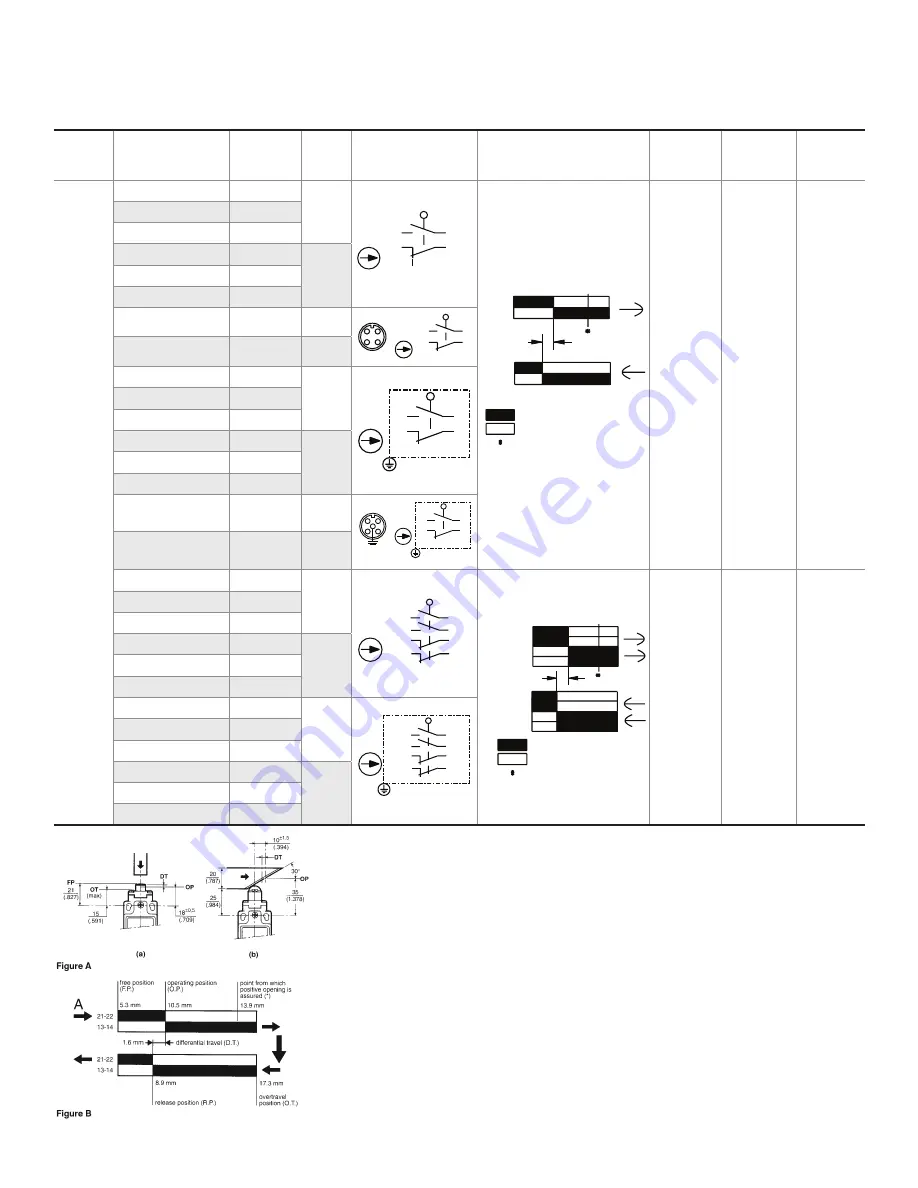
6
sensing.honeywell.com
MICRO SWITCH NGC Series
ISSUE 7
32313117
Actuation Catalog Listing
Connector/
Cable Exit
Switch
Type
Circuit Diagram
Bar Charts
Differential
Travel max.
Operat-
ing Force/
Torque max.
Release
Force/
Torque max.
Side
Rotary
NGCP*****X01A**
A
01
Black/
White
Black
Blue
Brown
Zb
22
21
13
14
21-22
0°
25°
45° 65°
DT
13-14
21-22
13-14
Contact Closed
Contact Open
Positive Opening
15°
18 Ncm
[1.59 in-lb]
2,5 Ncm
[0.22
in-lb]
NGCP*****X01A**
B
NGCP*****X01A**
D
NGCP*****X07A**
A
07
NGCP*****X07A**
B
NGCP*****X07A**
D
NGCP*****X01A**
N
01
Zb
22
2
1
4
14
21
1
3
13
2
3
4
NGCP*****X07A**
N
07
NGCM*****X01A**
A
01
Zb
Blue
13
Green/Yellow
Brown
14
22
Black
21
Black
White
NGCM*****X01A**
B
NGCM*****X01A**
D
NGCM*****X07A**
A
07
NGCM*****X07A**
B
NGCM*****X07A**
D
NGCM*****X01A**
P
01
Zb
22
2
1
4
14
21
1
3
13
2
3
4
5
Green/Yellow
NGCM*****X07A**
P
07
NGCP*****X24A**
A
24
White
Violet
Black
Red
Blue
Gray
Brown
Orange
2 Zb
White-Violet
Gray-Black
Orange-Blue
0°
26.5° 45° 65°
DT
Contact Closed
Contact Open
Positive Opening
Brown-Red
White-Violet
Gray-Black
Orange-Blue
Brown-Red
16.5°
17 Ncm
[1.5 in-lb]
2,1 Ncm
[0.19
in-lb]
NGCP*****X24A**
B
NGCP*****X24A**
D
NGCP*****X32A**
A
32
NGCP*****X32A**
B
NGCP*****X32A**
D
NGCM*****X24A**
A
24
White
Violet
Black
Red
Blue
Gray
Brown
Orange
2 Zb
Green/Yellow
NGCM*****X24A**
B
NGCM*****X24A**
D
NGCM*****X32A**
A
32
NGCM*****X32A**
B
NGCM*****X32A**
D
Table 3. Side Rotary Operating Characteristics
How to read and understand the bar chart information
The following example relates to a unit which has a snap action basic and which has a roller
pin plunger actuator. Follow the black arrows and the black strip on the chart. The black strip
indicates that there is a circuit between the terminals whose numbers are shown on the left and
when white there is no circuit.
Look at Figures A and B as examples. Actuator type used for test is the linear Cam travel type
(b) shown left. The start point is at the arrow marked ‘‘A’’ (See fig. B). This shows the free posi-
tion to be 5.3 mm from the vertical center line of the unit. At this stage there is a circuit between
the terminals 21-22 but no circuit between terminals 13-14. The unit can be actuated until it
reaches the operating position which is 10,5 mm from the center line – a travel distance of 10,5
– 5,3 = 5,2 mm from the free position. At this point the circuit arrangement changes – no circuit
between 21-22 but making a circuit between 13-14. If, however, the contacts of terminals 21-22
weld together and will not separate, a mechanical safety feature will take effect if the switch is
travelled past the point from which positive opening is assured, 13,9 mm. As the switch returns
it reaches the release position at 8.9 mm from the center line. The circuit will change back to the
original state and the difference between the operating position and the release position gives
what is known as the differential travel i.e. 10,5 – 8,9 = 1,6 mm. The asterisk (*) indicates the
point from which the positive opening is assured.




























